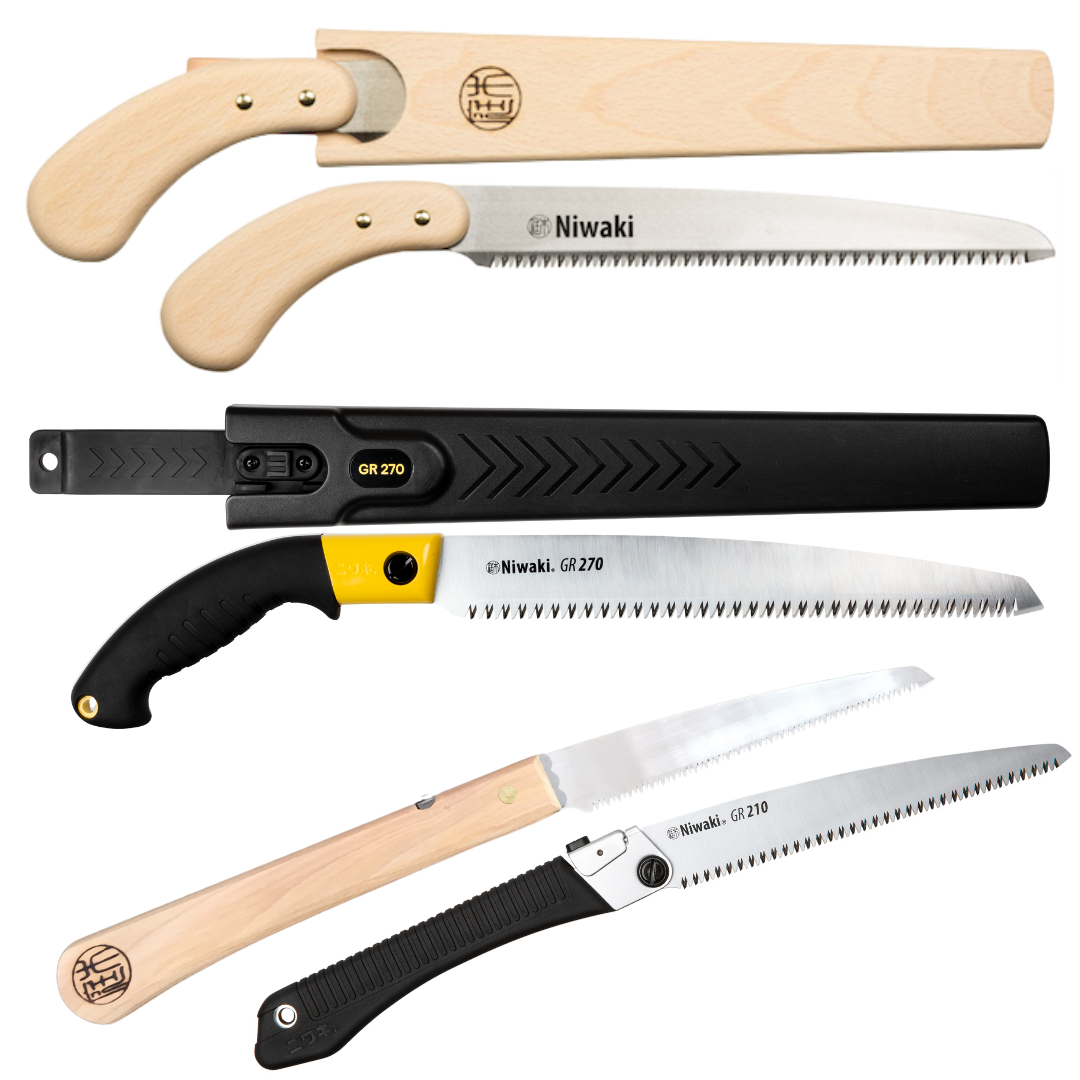
Which Pruning Saw should you buy - our buying guide...
Share

We’ve always been a big fan of a pruning saw. Ironically, because we don’t actually like pruning things in the garden. We like our plants, shrubs and trees to be big and natural. But then they get overgrown and we then have to tame them.
We rate Japanese pruning saws because they cut on the pull rather than the push, unlike a European carpentry saw. Given that when you are pruning you are often working above shoulder height, we reckon it makes sense that the power stroke is on the way down not on the way up. And, of course, because they are Japanese they're incredibly sharp.
If you’ve not used one before, yes, it does take a bit of getting used to, but once you have, it gives you much more power and we reckon you’ll never look back.
We’ve always stocked the wooden pruning saws from Niwaki, we use them and rate them. But we wanted to add some bigger pruning saws into our range – mainly because we have a rather vigorous laurel we need to sort out. But which pruning saws do we recommend and which ones should you buy? Here’s our ‘how to guide’ for deciding which pruning saw to pick – for different types of gardens and gardeners – because it all comes down to personal preference, how you like to garden, and what you need to prune…
- First decision to make is – do you want a folding pruning saw or a fixed blade?
- Second question to answer is – how big are the branches you want to cut? As this may determines the size of pruning saw you need.
- Third decision to consider is - do you want a wooden handle or a rubber one?
- Finally - how important is it that you can replace the blade?
Should I choose a folding pruning saw or a fixed blade?
The folding pruning saws are much easier to keep and carry around with you. Which means that when you are in the garden you have it close by, and it avoids the temptation to use the loppers or secateurs – because sometimes we push it and always go bigger than we should! Generally speaking a secateur will handle anything up to the size of your little finger, whilst loppers can go bigger. But anything bigger than the size of your thumb (and yes we know it all depends on your finger and thumb size – but this is a quick guide!) we would recommend you switch to thinking about using a pruning saw. So you might want to chose a folding pruning saw if you have a habit of over stretching your secateurs or loppers, or if you just like having your tools on your belt and always to hand,
What size should I go for?
The general rule is that a pruning saw will cut up to a third of its length – so you just need to have the size of what you want to cut in mind. For example, if you have a 21 centimetre blade, you'd be looking at a maximum branch diameter of about seven centimetres diameter. Yes, you can push it to cut a bigger branch - but obviously when you're moving it across the branch to cut it you're going to have to do a lot more strikes to cut through
Do I need a replaceable blade option for my Pruning Saw?
Whilst all pruning saws from Niwaki are good quality and will last a good amount of time, if you are using them regularly and want to be able to keep it sharp, having the option to buy replacement blades is a good feature, as pruning saw blades are incredibly difficult to re-sharpen, so replacement really is your only option.
Ok so which one should I buy?
We now have two Niwaki folding pruning saws:
- the Niwaki Moku folding pruning saw (18cm) which has a wooden handle
- the Niwaki GR 210 pruning saw, which is new to us. It has a comfortable rubber handle and a 21cm blade. An interesting point of difference is that you can crank it back slightly to change the cutting angle, so that it can cut at a flatter angle. The key difference to the Moku (aside for 3cm length) is that it has a replaceable blade.
We now stock two Niwaki fixed blade pruning saws:
- The Niwaki Moku fixed blade wooden pruning saw (24cm)
- The Niwaki GR 270 pruning saw. This is the largest pruning saw from Niwaki at 27 centimetres - so if you've got some big stuff you need to cut in the garden, this might be the best choice for you. It has a rubber handle and the option to replace the blade too.
